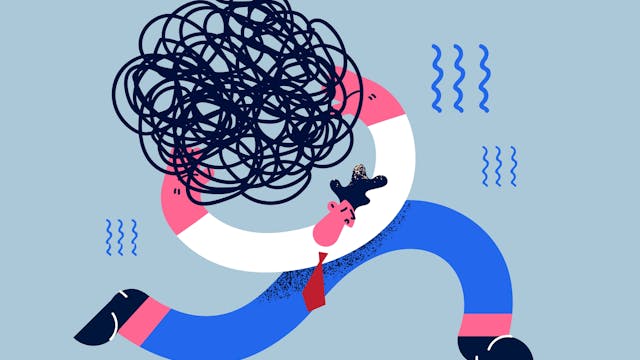With school districts in some parts of the country feeling the pain of teacher shortages, states have tried to address the problem with a patchwork of policies that expand who can lead a classroom: from undergrad teacher trainees in Arizona to fast-track certifications for military veterans in Nebraska.
Researchers at Kansas State University dug further into education workforce data to find not just where teacher shortages are taking hold but to what extent states are relying on “underqualified” teachers.
That’s defined by the report as teaching positions filled by people who have an “irregular, provisional, temporary, or emergency certification” to teach. It also includes certified teachers who are filling positions outside their subject of expertise — like a history teacher assigned to a math class.
Tuan D. Nguyen, an assistant professor at Kansas State University’s College of Education, and his colleagues found at least 163,000 teaching positions nationwide are held by underqualified teachers. Another 36,500 teaching jobs sit vacant, according to their 2022 report.
The consequences for students in those districts can vary, Nguyen says, as schools dealing with teacher shortages may merge classes — up to 34 or 35 students, in some cases — or cancel others altogether.
“They may say, ‘We’re not going to be able to offer physics classes,’” Nguyen explains, “or use substitutes just to have somebody in that class and keep the class under control. [Or they might] put somebody who isn't qualified to be there, like an English teacher teaching biology.”
Particularly for STEM courses, Nguyen says it’s important to have an instructor who has not just the pedagogical knowledge but also the content knowledge to effectively teach the class.
Teachers who don’t have standard certifications — like provisional or emergency certificates — are also more likely to leave the school or the profession, according to the report.
“You get this cycle of churn, and it’s costly for the district,” Nguyen says. “Those are the main two problems. Are these the best teachers for this subject so students aren't hurt by a teacher who doesn't have content [expertise]? And so the school doesn't have to replace them?”
Hot Spots
New Hampshire topped the list of states with about 349 underqualified teachers for every 10,000 students. Looking at the figure in terms of staffing, that’s 40 underqualified teachers for every 100 teachers in the state.
The state’s top education official points to New Hampshire’s five alternative teacher certification programs, which each require a bachelor’s degree, as a factor explaining this ratio.
“New Hampshire has a rigorous alternative pathway to licensure program that [has] been successful in providing competent, qualified, knowledgeable and professional educators,” Frank Edelblut, commissioner of the state’s education department, said in an emailed statement. “Because of our robust alternative certification pathway, we are able to attract highly qualified individuals outside of the education profession to enrich the lives of students in New Hampshire.”
While New Hampshire is having trouble finding teachers in certain subject areas — upper level math and middle school science, for example — officials told ABC News the state overall was not dealing with a shortage in a national analysis published in February.
Washington, D.C., was a distant second at 237 underqualified teachers for every 10,000 students — or about 29 underqualified teachers for every 100 teachers. The nation’s capital and the surrounding suburbs were hit with a spike in teacher resignations last summer.
But a spokesperson for the Washington, D.C., Office of the State Superintendent of Education doubted the data’s accuracy, noting that the figures about the city’s schools come from a federal report that dates back to 2018.
“This ranking may not necessarily reflect the current landscape of the educator workforce across the country,” the spokesperson said in an emailed statement, adding that more than 90 percent of Washington, D.C., teachers are considered “in-field” as of 2022.
The term recognizes teachers as “having a university degree in their field of teaching, an active certification in their field of teaching, and/or at least one year of effective teaching in their field as measured by the [local education agency] teacher evaluation system.”
North Carolina, Massachusetts and New Jersey rounded out the top five.
Meanwhile, the problem is least severe in Iowa. That doesn’t mean the picture is rosy in the Hawkeye State, where many districts started the school year without a full roster of teachers and substitutes.
When does the ratio of underqualified teachers become a problem? That depends on each community, Nguyen says.
“Does that seem high to you or low to you? This is subjective to what you’re willing to accept,” he says. “In a high school, I don’t want 30 underqualified teachers serving there.”
The reasons for both the teacher shortages and use of underqualified teachers vary depending on the state, he explains. Some states don’t have enough people enrolled in teacher prep programs, while others are seeing more teachers retiring and higher turnover. It’s an issue Kansas State University researchers are going to continue digging into.
When it comes to shoring up the teacher workforce for the long term, Nguyen says the education field will have to not only attract more people to teacher university programs but also incentivize people to stay. But, he adds, it’s about more than the numbers.
“In the long run, we need to think about changing the narrative of what it means to be a teacher in this country,” he says. “Teachers should be respected, and the salary should match the level of experience they have. If we don't, it’s hard to see how we change the overall picture. If we can increase salary, prestige and respect, if we can increase production and lower turnover, that would help vacancy and underqualified teacher rates.”


